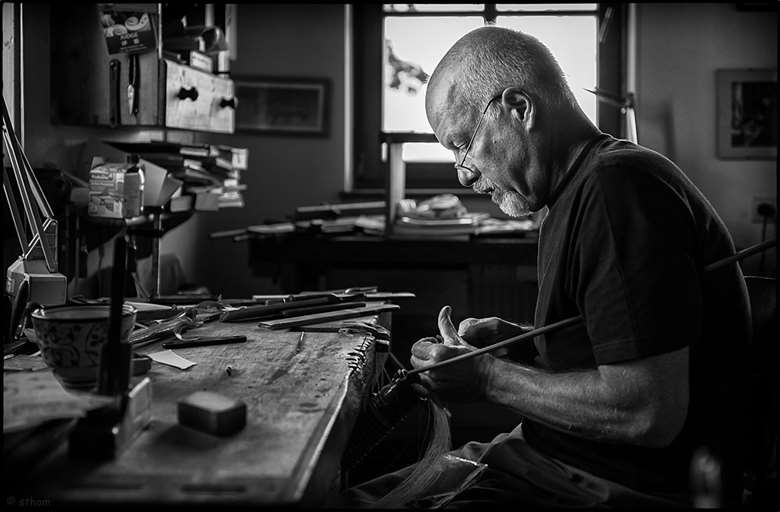Trees of Music: artists rally to protect pernambuco wood
Stephen Pritchard
Tuesday, March 30, 2021
Stephen Pritchard finds out more about a new campaign to save an endangered wood used to make bows

Illegal logging ravaging the rain forests of South America damages more than the Earth’s delicate ecosystem – it threatens the very future of classical music.
The Atlantic coast of Brazil is home to the pernambuco tree, which for three centuries has provided the principal source of wood for violin, viola, cello and double bass bows. Now, with only 6% of the tree’s habitat left, major performers are leading a campaign to protect and regenerate this critically endangered species. Without help, they say, the pernambuco tree could be gone for good in a decade.
Also known as paubrasilia or brazilwood, the tree that gave the nation its name was listed as an endangered species in 2007, yet its destruction and exploitation goes on. In 2018, for instance, authorities seized more than 20,000 violin bows made from illegally logged wood.
This month, master bow-maker and ecologist Marco Raposo has joined other leading archetiers and celebrated classical players to launch Trees of Music, a campaign aiming to raise enough cash to distribute 50,000 pernambuco saplings to small-scale farmers in the Brazilian state of Espírito Santo. They want to regenerate natural habitats, bolster livelihoods and secure the sustainable long-term future of stringed instrument playing.
One of Trees of Music’s ambassadors – joining, among others, violinist Viktoria Mullova and cellist Matthew Barley – is violinist Tasmin Little, who having last year decided to leave the concert platform while at the top of her game, is now concentrating on teaching, adjudicating, writing, and supporting musical causes.
‘A bow has as much importance and individuality as a violin itself,’ she says, while confessing that as a young player it took her a while to fully appreciate just what a difference a bow could make to her playing. ‘In my early 20s I had a lightbulb moment when I tried a couple of different bows and I suddenly heard and felt the difference between them. It was spectacular.’
Little used a bow made by the prominent Parisian archetier Nicolas Satory when she was loaned ‘The Regent’ Stradivarius violin. ‘The Sartory went amazingly with the Strad, but strangely it didn’t work as well with my lifetime Guadagnini violin. However, one made by another French bow-maker, André Richaume, made a perfect partnership with it.’
Why would that be? ‘It’s a mystery,’ says Little. ‘A bit of black magic. After all, one bow looks much like another. That’s one of the reasons bows are not given the same attention as instruments.’
Describing bow-making as ‘a bit like a secret society’ she says: ‘I don’t understand what it is that makes the difference – that one can sound great and another even better. I’ve always preferred a heavier bow, but even two of the same weight can sound completely different. It must have something to do with how a bow relates to a violin and whether the resonances are in sync with each other.’
Originally exported to Europe in the 1500s for use as a red dye, pernambuco was found to be ideal for bow-making in the mid-18th century due to its ability to hold a fixed curve, championed by bow-maker François Xavier Tourte and violinist Giovanni Battista Viotti. Today, most professional bow-makers – mainly found in France, Italy, Germany, the USA, and the UK – use pernambuco wood, which has unique resonance combined with flexibility and strength – vital to achieve some of the demanding effects called for in the 19th-century violin repertoire.
‘You have to have a bow that can allow you to explore the full range of techniques, particularly complicated ones such as saltando and spicatto,’ says Little. ‘You can’t have a bow that won’t bounce. Saltando is effectively a controlled drop onto the string with the bow’s natural bounce taking over. You have to get to know your bow and find that maximum bounce place on it, that crucial point.’
Little says a performer really needs to know their bow well to be able to bring off the complicated saltando in, for example, Fritz Kreisler’s arrangement of Danse Espagnol from Manuel de Falla’s La Vida Breve, where broken chords are played over all four strings, or in the final movement of Paganini’s first violin concerto.
After a lifetime of playing and a legacy of 45 recordings, including all the major violin concertos, Little has left performing for good, even to the point where she now owns no musical instrument. She has sold her beloved Guadagnini, and while she won’t say who bought it, she can reveal one thing: ‘The bow and violin have remained together. The person who bought it understood they worked well together. I’m so happy about that.’
When pernambuco was first listed as endangered the renowned German bow-maker Klaus Grünke, quoted in The Smithsonian, said: ‘We have the chance now to react and serve as an example for others, a chance that may never come again. All of us, musicians, bow-makers, instrument-makers and music lovers alike, have profited from the wood pernambuco for centuries. It is time to give nature something back.’
For more details go to https://treesofmusic.org